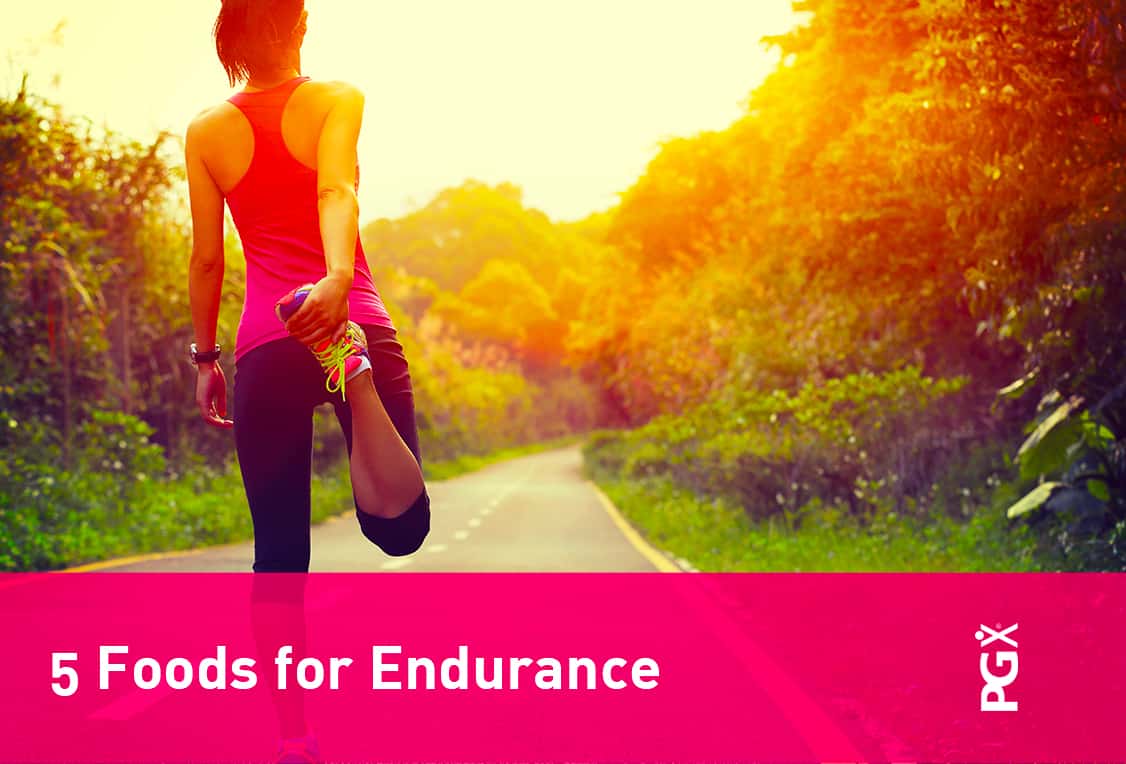5 Foods for Endurance
Loading up on carbs is standard practice before an endurance event as this is thought to help ensure the muscles are full of glycogen for quick energy, but some athletes have found other great ways to boost stamina and performance.
If you’re gearing up for a race, try smashing your personal best by eating these 5 foods for endurance:
1. Buckwheat
A source of all nine essential amino acids, tryptophan and vitamins E and B, calcium and manganese, buckwheat is a staple for many endurance athletes. Not actually a grain, this seed of the rhubarb family is gluten-free and much more alkaline-forming than glutinous grains, helping the body to maintain a healthy blood pH. The slow-release carbohydrates in buckwheat help sustain energy levels and promote a better performance.
Try adding sprouted buckwheat to a smoothie, or as part of a salad with chickpeas, beans, and fresh fruits and vegetables.
2. Flaxseed
A source of omega-3 fatty acids, flaxseed supports healthy fat metabolism, circulation and normal inflammatory response. The easily metabolized fatty acids in flaxseed help to spare muscle glycogen, enhancing endurance. Flaxseed is also a source of potassium, an important electrolyte needed for muscle contractions and lost through sweat.
Try a tablespoon of flaxseed in a smoothie, on yoghurt and fruit, or with granola. Add a scoop of PGX® to help support healthy blood sugar regulation already in the normal range and keep hunger pangs at bay!*‡
3. Soy
These green beans are perfect for endurance athletes. Steamed edamame are a delicious snack to keep protein intake high, while soy protein is easily digestible and ideal for a recovery drink after a long run to help promote muscle growth.
In one study, researchers at Ohio State University found that soy is just as effective as whey protein for building lean muscle in male athletes (Brown et al., 2004). What’s more, soy actually helps preserve antioxidant function, whereas whey had a potentially negative effect on antioxidant status after workouts!
4. Apples and Onions
Several studies have shown that quercetin, a natural polyphenolic flavonoid found in abundance in apples and onions can help improve endurance when ingested for at least seven days prior to exercise. Quercetin has been seen to have antioxidant activity and to support healthy immune function and healthly inflammatory response, which could help athletes recover more quickly after training. ‡
In one study, healthy but untrained volunteers who took 500 mg of quercetin twice daily for 7 days had a 13.2% increase in the time it took for fatigue to set in during a bike ride, compared to those taking a placebo for 7 days. Quercetin was also associated with a modest increase (3.9%) in VO2max, a measurement of maximal aerobic capacity (Davis et al., 2010).
An apple a day (around 100g) contains the equivalent antioxidant activity of about 1500 mg of vitamin C, with much of that activity courtesy of quercetin (Eberhardt et al., 2000). Importantly, the quercetin in apples is found exclusively in the peels, with the average amount of quercetin amounting to 13.2 mg/100 g of fruit (Lee et al., 2003).
5. Almonds
Almonds are not only a source of calcium and other minerals, they may also enhance endurance in trained athletes. A study published recently in the Journal of the International Society of Sports Nutrition found that cyclists and triathletes who ate 75 g of almonds per day had an increase of 1.7 km in endurance cycling distance compared to baseline (Yi et al., 2014).
The almonds were also associated with more efficient use of oxygen and carbohydrate, as well as higher vitamin E and total antioxidant capacity, suggesting that including a handful of almonds in your daily diet could help enhance your exercise endurance and support healthy muscle recovery by reducing oxidative damage during exercise.
References
Brown EC, DiSilvestro RA, Babaknia A, et al. (2004). Soy versus whey protein bars: effects on exercise training impact on lean body mass and antioxidant status. Nutr J, Dec 8;3:22.
Davis JM, Carlstedt CJ, Chen S, et al. (2010). The dietary flavonoid quercetin increases VO(2max) and endurance capacity. Int J Sport Nutr Exerc Metab, Feb;20(1):56-62.
Eberhardt M, Lee C, Liu RH. (2000). Antioxidant activity of fresh apples. Nature, 405:903-904.
Lee K, Kim Y, Kim D, et al. (2003). Major phenolics in apple and their contribution to the total antioxidant capacity. J Agric Food Chem, 51:6516-6520.
Yi M, Fu J, Zhou L, et al. (2014). The effect of almond consumption on elements of endurance exercise performance in trained athletes. J Int Soc Sports Nutr, May 11;11:18.
* Drink additional water (8 fl. oz.) after ingesting PGX®. If you are taking medications, take one hour prior to or two hours after taking PGX®
‡ This statement has not been evaluated by the Food and Drug Administration. This product is not intended to diagnose, treat, cure or prevent any disease.

